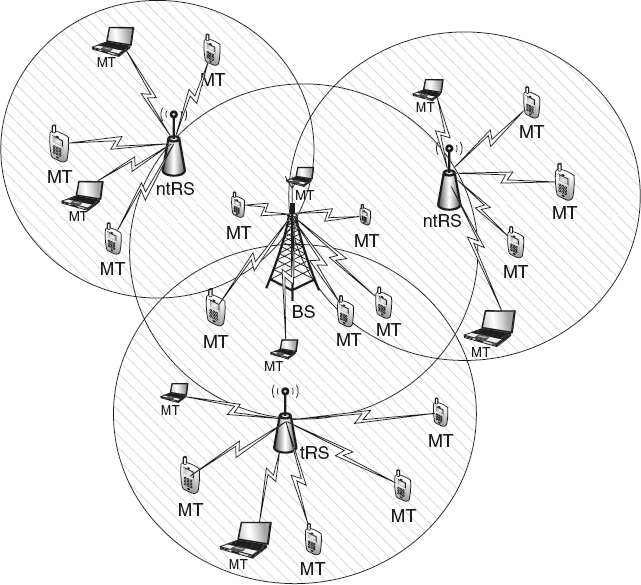Femtocells
Using RSs, the cellular network could enhance the communication experience of its users by shortening their transmission distances. However, the overall system traffic remained the same since RSs are directly communicating with the BSs. Alternatively, femtocells could reduce this traffic while reducing the transmission range to and from the MSs.

Figure 2.9 Network where non-transparent stations are used for capacity enhancement.
Femtocells have a very little upfront cost to the service provider and can result in very high capacity gains by making use of the wired broadband infrastructure that users already have in their homes/offices. In fact, studies on cellular usage patterns indicate that 70 % of the traffic originates from indoor environments, that is, homes and offices. This traffic requires high SNR levels in order to successfully deliver broadband services, which is challenging because indoor devices operating at gigahertz carrier frequencies suffer from serious attenuation losses. Consequently, the femtocell approach enhances the system capacity with a minimal infrastructure cost. It can also improve the communication quality of the users, hence pleasing both, the operator and the user.
A femtocell can be seen as a small home BS operating in the conventional licensed cellular bands, but with a short-range, a low-cost, and low transmit-power specifications. This ...
Get LTE, LTE-Advanced and WiMAX: Towards IMT-Advanced Networks now with the O’Reilly learning platform.
O’Reilly members experience books, live events, courses curated by job role, and more from O’Reilly and nearly 200 top publishers.

